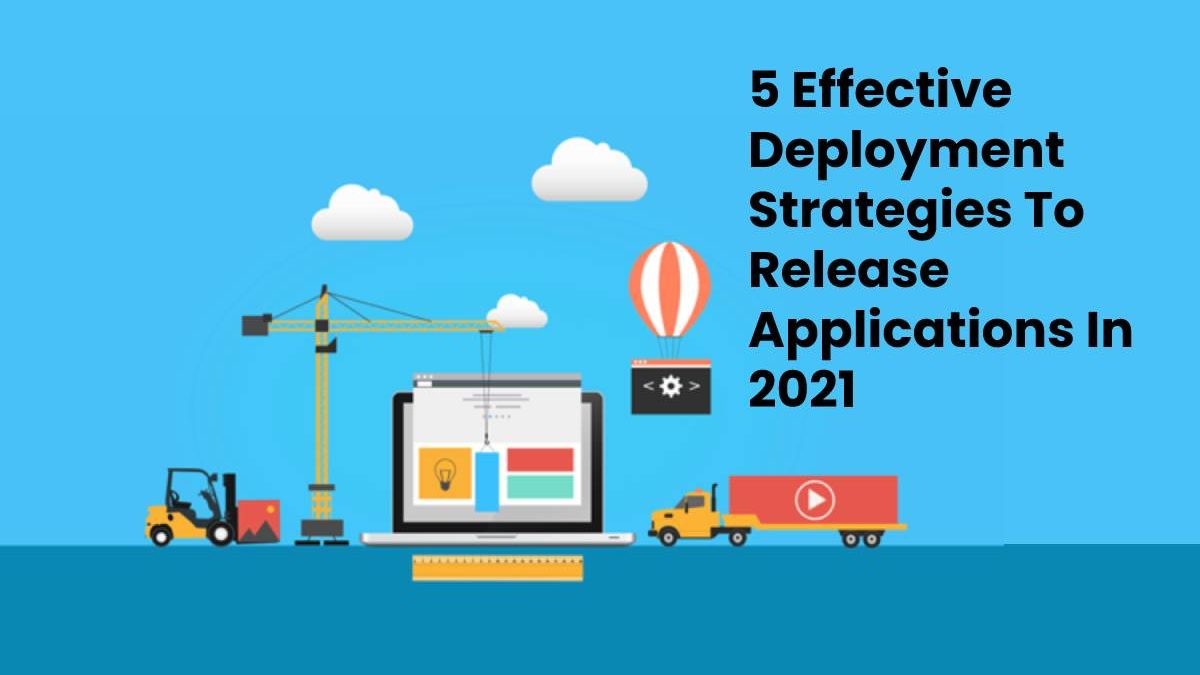There are several effective deployment strategies to release applications in 2021. Ultimately, DevOps team members have a shared responsibility to ensure their applications are released on healthy infrastructure. Therefore, it is essential for all team members to know when each deployment strategy is most effective. For example, your team will likely want to minimize downtime when application uptime is critical. In this case, the rolling updates method could work best for the app. Indeed, different strategies work for various application needs. As a developer working on a DevOps team, you need to know about the best deployment options. This way, you can choose the most appropriate strategy for your client’s app. Read on to learn about the most effective deployment strategies to release applications in 2021.
Table of Contents
Ramped Deployment
First, your DevOps team can use the ramped deployment strategy to effectively release your software. Typically, this method entails slowly rolling out a version of your application. To do this, you can replace each instance individually until all of the instances are rolled out. Usually, when you have a pool of Version A of your application behind a load balancer, you deploy one instance of version B. When the service is ready for use, you add the instance to the pool. Then, you can remove one instance of version A from the pool. This strategy is especially convenient for applications that can handle data re-balancing. Of course, you can tweak the number of instances to add or roll out throughout the process. Definitely, ramped deployment is effective to release your application versions across your instances slowly.
Recreate Deployment Pattern
Next, consider using the recreate patterns to deploy your applications in 2021. With this method, you slowly scale down your existing application version. Meanwhile, you can scale up your new application version. Typically, you need to scale down your existing replicas of Version 1 to zero when you update your application versions. Once your DevOps team completes this procedure, you can deploy your replicas with the new version. The primary advantage of the recreate deployment strategy is its simplicity. Notably, you do not need to manage multiple application versions at the same time. Thus, you avoid compatibility challenges for your critical application information. Certainly, recreate deployment patterns have transformed mobile technology in the new digital era.
Canary Deployment
In addition, you can also use the canary deployment approach for effective 2021 software release. Typically, you use the canary method when you want to test a new functionality on the backend of your application. Commonly, software engineers opt for this strategy when deploying on Kubernetes. This is because most simple deployments only require the service, canary versions, and stable application replicas. Additionally, you can manage multiple releases using Helm. You need to use a basic Helm chart that supports your deployment resources. Of course, you can also install a Helm charts repository to manage your packaged charts and streamline deployment on Kubernetes. With this streamlined release management, the canary method is a great strategy to deploy on Kubernetes.
Blue-Green Deployment
Moreover, the blue-green deployment pattern is another effective strategy for mobile app development in 2021. Typically, this method involves operating two production environments at the same time, parallel to one another. Usually, your team designates one of these for the current stable release (blue). Then, you can use the other to stage and perform testing on the next release (green). This way, you can easily release updated software versions in a repeatable pattern. Plus, developers can use this approach to automate new version roll outs on their continuous integration/continuous delivery (CI/CD) pipelines. Absolutely, the blue-green deployment strategy is a great option if you’re looking for an easy way to release your software updates.
A/B Deployment
If you are already embracing Kubernetes to manage deployments, the A/B deployment method is another effective deployment technique to try in 2021. With this method, you can try a new version of the application within the production environment. Typically, you can specify the production version to get a majority of the user requests. Then, you can designate a limited fraction of the requests to go to the new version. Ultimately, you can increase the fraction of requests to the new version as testing progresses in your SDLC. Of course, you may need to scale the number of pods in your services to maintain a high performance. This method usually works best when your software versions are similar enough to run at the same time. Surely, A/B deployment is an effective technique to release your apps.
There are several effective deployment strategies to release applications in 2021. First, ramped deployment is a great strategy to release your versions slowly across your instances. Next, the recreate deployment pattern is a simpler deployment technique to consider. In addition, you can use the canary deployment method when releasing apps on Kubernetes. Moreover, blue-green deployment is an effective approach if you’re looking for an easy way to release your updates. Furthermore, the A/B deployment method is a viable option when your versions are similar enough to run at the same time. Consider these effective deployment strategies to release applications in 2021.

